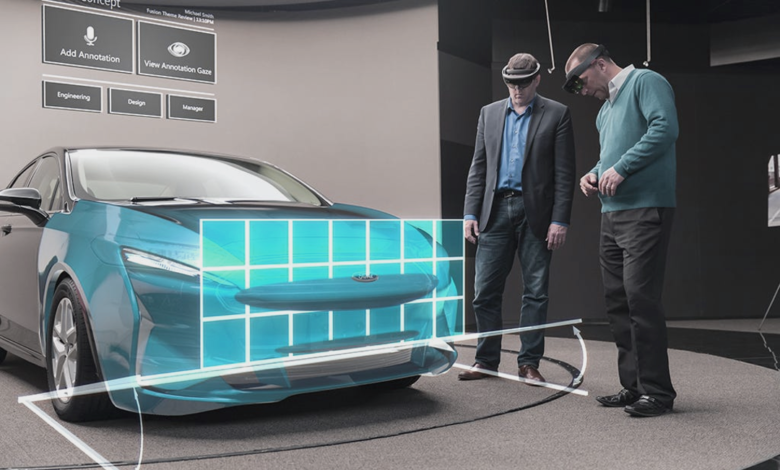
The automotive industry has always been a playground for innovation, pushing the boundaries of design and engineering. Among the countless vehicles developed over the years, some stand out not for their practicality but for their sheer absurdity. These weirdest concept cars were bold experiments some visionary, others downright bizarre that never made it to production. From flying cars to bubble-shaped pods, these vehicles challenge our perception of what a car should be. Buckle up as we take a wild ride through 10 of the strangest concept cars ever created!
As we conclude our journey through these weirdest concept cars, one thing becomes clear: automakers have never shied away from dreaming big. While many of these designs were too outlandish for the road, they paved the way for future innovations in safety, aerodynamics, and sustainability. Some ideas, like electric propulsion and autonomous driving, were ahead of their time and are now mainstream. Whether laughable or brilliant, these Weirdest Concept Cars remind us that creativity knows no limits. Who knows? Maybe one day, a design once deemed too weird will become the norm!
10 Weirdest Concept Cars You’ll Never Believe Were Real
The Chrysler Turbine Car 1963
One of the most ambitious yet impractical experiments in automotive history, the Chrysler Turbine Car was powered by a jet engine. Unlike traditional internal combustion engines, this car ran on a variety of fuels, including kerosene and even tequila! Only 55 units were built, and most were destroyed after testing. The turbine engine was smooth and powerful but proved too expensive and inefficient for mass production. Still, its futuristic design and jet-age inspiration make it one of the weirdest concept cars ever made.
The GM Firebird III 1958
Imagine a car with wings and a joystick instead of a steering wheel that was the GM Firebird III. Designed as a gas-turbine-powered vehicle, it looked more like a spaceship than a car. Its futuristic features included automatic crash avoidance systems and a titanium body. While it never hit the streets, it showcased GM’s vision of future transportation, blending aviation and automotive technology in a way that was decades ahead of its time.
The BMW Lovos 2008
The BMW Lovos (Life of Visionary Organic Sustainability) was a bizarre, scale-covered concept that looked like something from a sci-fi movie. Its exterior was made up of 260 movable flaps that could adjust for aerodynamics or even “breathe” to cool the engine. The design aimed to maximize energy efficiency, but its impracticality and unsettling appearance ensured it remained a concept. Still, it remains one of the most visually striking and weirdest concept cars ever.
The Volvo Venus Bilo 1933
Long before aerodynamic designs became mainstream, the Volvo Venus Bilo took streamlining to the extreme. Shaped like a teardrop, this car was designed to minimize wind resistance, but its single-seat configuration and unusual shape made it impractical. Despite its failure, it influenced future aerodynamic car designs, proving that even the Weirdest Concept Cars can leave a lasting legacy.
The Nissan Pivo 2005
The Nissan Pivo was a quirky electric car with a rotating cabin, allowing drivers to change direction without reversing. Its cute, pod-like design and 360-degree turning ability made it a hit at auto shows, but the real-world usability issues kept it from production.
The Cadillac Cyclone 1959
The Cadillac Cyclone was a space-age dream with a bubble canopy, pop-up headlights, and radar-based collision detection an unheard-of feature in the 1950s. Its futuristic styling made it a showstopper, but the technology was too advanced for production. Today, it stands as a symbol of mid-century optimism and automotive experimentation.
The Fiat 600 Turbina 1954
Another gas-turbine experiment, the Fiat 600 Turbina, was a tiny car with a jet engine. It could reach 160 mph, an insane speed for its size, but its fuel consumption and noise made it impractical. Still, it remains one of the most audacious attempts at redefining car propulsion. Designed to showcase Fiat’s engineering prowess, it pioneered aerodynamics with its wind-tunnel-tested, aluminum-alloy body.
The Ford Nucleon 1958
Perhaps the most outrageous concept, the Ford Nucleon, was designed to run on nuclear power. A small reactor would theoretically power the car for thousands of miles, but the risks of radiation made it impossible. Today, it’s a fascinating relic of Cold War-era atomic optimism. This never-built nuclear dream car remains a fascinating symbol of mid-century technological ambition gone wonderfully wrong.
The Toyota EX-III 1969
The Toyota EX-III was a three-wheeled, gyroscopically stabilized car that leaned into turns like a motorcycle. Its unconventional design aimed to combine bike agility with car comfort, but stability issues doomed the project. The EX-III remains a fascinating example of Toyota’s experimental engineering during the late 1960s. Today, it stands as a quirky relic of automotive history, showcasing bold ideas that were ahead of their time.
The Volkswagen GX3 2006
A three-wheeled, open-air hybrid between a car and a motorcycle, the Volkswagen GX3 promised thrilling performance. However, safety concerns and regulatory hurdles prevented it from reaching production. The GX3 showcased VW’s willingness to experiment with unconventional urban mobility solutions. Today, it remains a cult favorite among enthusiasts of weird and innovative Weirdest Concept Cars.
Read More: America’s Most Unusual Entrepreneurs:The CEO Who Lives in a Treehouse
Conclusion
Exploring these weirdest concept cars reveals just how daring and sometimes bizarre automotive designers can be. While most never made it past the prototype stage, they pushed the boundaries of what cars could be, inspiring future innovations. Some ideas, like electric drivetrains and autonomous tech, were ahead of their time and are now industry standards. The world of weirdest concept cars proves that automotive innovation knows no limits even when practicality takes a backseat to imagination. From jet-powered vehicles to nuclear-reactor prototypes, these bizarre creations pushed boundaries, challenged conventions, and occasionally made us wonder.
While most never made it to production, their influence can be seen in today’s electric cars, autonomous tech, and aerodynamic designs. They remind us that progress often starts with wild, daring ideas even the ones that seem too strange to succeed. Ultimately, these concept cars remind us that progress often starts with wild, unconventional thinking. Who knows? Maybe one of today’s “crazy” concepts will be tomorrow’s reality. Until then, we can marvel at these incredible machines that dared to be different!
FAQs
Why were these concept cars never produced?
Most were too impractical, expensive, or technologically unfeasible for mass production. Others faced safety concerns, regulatory hurdles, or simply lacked consumer demand for such radical designs.
Did any Weirdest Concept Cars influence modern vehicles?
Yes! Features like electric powertrains and collision detection were first seen in concept cars. Even some of their most outlandish ideas eventually trickled down into today’s production vehicles through gradual technological.
What was the strangest feature in these Weirdest Concept Cars?
The Ford Nucleon’s nuclear reactor and the BMW Lovos’ scale-like flaps are among the Weirdest Concept Cars. Other bizarre highlights included the Chrysler Turbine’s tequila-burning engine.
Are any of these cars still around today?
A few, like the Chrysler Turbine Car, survive in museums. Most were destroyed after testing, but some privately owned prototypes occasionally surface at auctions or exhibitions.
Will we ever see such bizarre cars on the road?
While most won’t return, some futuristic designs may evolve into practical vehicles. As technology advances, even the wildest ideas like autonomous pods or alternative fuels could eventually hit roads in practical forms.











